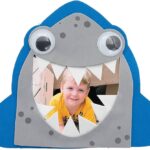I. Introduction to CNC Machined Aluminum Faceplates
II. Benefits of Using Aluminum Faceplates for Eurorack Synth Modules
III. How to Customize Your Own CNC Machined Faceplates for DIY Projects
Introduction to CNC Machined Aluminum Faceplates
Welcome to the fascinating world of CNC machined aluminum faceplates! Whether you’re a seasoned synthesizer enthusiast or just dipping your toes into the DIY synth waters, understanding the role of faceplates is essential for your Eurorack synth modules. So, let’s dive right in!
CNC, which stands for Computer Numerical Control, refers to a manufacturing process where pre-programmed software dictates the movement of machinery. This technology has revolutionized the way we create products, especially in the realm of musical instruments. When it comes to faceplates for Eurorack synthesizers, CNC machining ensures precision and quality that is hard to achieve through traditional methods. Imagine having a piece that not only looks sleek but also fits perfectly into your modular setup—now that’s a win-win!
What Are Aluminum Faceplates?
In the context of synthesizers, faceplates are the front panels that hold all your knobs, jacks, and switches. Aluminum is the material of choice for many DIY builders and manufacturers. But why aluminum? Here are a few reasons:
- Durability: Aluminum is exceptionally robust, making it resistant to wear and tear over time.
- Lightweight: Despite its strength, aluminum is lightweight, which is a big plus for portable synth setups.
- Aesthetics: It has a modern, clean look that can elevate the overall appearance of your instrument.
Using CNC machining, manufacturers can create intricate designs and finishes that enhance not just the functionality but also the visual appeal of your modular system. Whether you prefer a matte finish or a polished look, there’s an aluminum faceplate that’s just right for you.
Why CNC Machining?
You might be wondering why CNC machining is the go-to option for creating these faceplates. Here’s what makes it stand out:
- Precision: CNC machines operate with high accuracy, which translates into perfectly aligned holes and cut-outs for jacks and knobs. This means smoother operation and a better user experience.
- Reproducibility: Once you’ve got your design down, CNC machining allows for consistent replication. That means if you fall in love with your custom faceplate, you can easily make more!
- Flexibility: CNC technology allows for both small and large runs. Whether you’re crafting a single prototype or a batch of ten, CNC makes it easy.
Closing Thoughts
In summary, CNC machined aluminum faceplates are an essential component of Eurorack synthesizers, combining durability, aesthetics, and precision. They not only enhance the functionality of your modules but also allow you to showcase your personal style. If you’re embarking on a DIY project, understanding the importance of a quality faceplate will set you up for success in your synth-building journey. So, get ready to explore the endless possibilities that CNC machined faceplates can offer!
Benefits of Using Aluminum Faceplates for Eurorack Synth Modules
Hey there, synthesizer enthusiasts! If you’re diving into the world of Eurorack, you’ve probably come across the term “faceplate.” But have you considered the benefits of using aluminum faceplates for your synth modules? Let’s explore why they’re a fantastic choice for your next DIY project!
1. Durability and Strength
First off, aluminum is known for its impressive strength-to-weight ratio. This means that while your faceplate will be lightweight, it won’t compromise on toughness. Whether you’re lugging your synth to gigs or just jamming at home, aluminum can withstand the wear and tear of regular use without bending or breaking.
2. Aesthetic Appeal
Let’s not forget about the visual aspect! Aluminum faceplates have a sleek, modern look that can elevate the overall aesthetic of your Eurorack setup. They come in various finishes—anodized, brushed, or even powder-coated—that can complement your personal style and match the vibe of your modular synths. Plus, you can easily customize the surface with graphics or etchings, making your modules truly stand out!
3. Lightweight Design
As musicians, we all know that every ounce counts—especially when you’re packing up to head to a gig. Aluminum is incredibly lightweight, making it easy to transport your synth without feeling like you’re hauling around a ton of bricks. This is especially crucial for those who love to perform live; you can focus on your music rather than the weight of your gear.
4. Thermal Conductivity
Another cool benefit? Aluminum has great thermal conductivity. This means that any heat generated by components in your Eurorack modules can effectively dissipate, helping to maintain optimal operating temperatures. It’s a subtle yet essential detail that can contribute to the longevity and performance of your gear.
5. Easy to Work With
If you’re into DIY projects, you’ll appreciate how easy aluminum is to work with. It can be machined, drilled, and cut with relative ease, allowing you to tailor your faceplates to fit your specific designs. You won’t need to be a master craftsman to create something beautiful and functional! Just make sure to use the right tools and techniques, and you’ll be on your way to crafting stunning faceplates.
6. Cost-Effective
Last but not least, aluminum is often a cost-effective choice. Compared to other materials, like stainless steel or custom plastics, aluminum faceplates can be more affordable, especially for DIY enthusiasts who want to keep their project budgets in check. You get all the benefits without breaking the bank—what’s not to love?
So, if you’re contemplating what material to use for your Eurorack faceplates, aluminum should be at the top of your list. It combines durability, aesthetics, and ease of use, making it the perfect option for anyone looking to create or upgrade their synth modules. Happy building, and may your soundscapes be ever inspiring!
How to Customize Your Own CNC Machined Faceplates for DIY Projects
So, you’ve decided to dive into the world of DIY Eurorack synth modules, and you’re eager to give your projects a personal touch. One of the best ways to do that is by customizing your own CNC machined aluminum faceplates! Not only do these faceplates provide a sleek and professional aesthetic, but they also allow you to express your unique style. Let’s walk through the process together!
Step 1: Designing Your Faceplate
The first thing you need to do is design your faceplate. This is the fun part where you get to unleash your creativity! Here are some tips to get started:
- Use Design Software: Programs like Inkscape, Adobe Illustrator, or Fusion 360 are great for creating vector designs. If you’re new to this, Inkscape is free and user-friendly!
- Get the Dimensions Right: Measure the dimensions of your synth module carefully. You want your faceplate to fit snugly, so precision is key.
- Think About Layout: Consider where the knobs, jacks, and switches will go. It’s helpful to create a mock-up on paper first to visualize everything before finalizing your design.
Step 2: Choosing the Right Material
While aluminum is a fantastic choice for faceplates, not all aluminum is created equal! When customizing your faceplate, consider the following:
- Thickness: A thickness of 2-3mm is common for durability while still being lightweight.
- Finish: Whether you prefer a brushed, anodized, or powder-coated finish, the right choice can enhance the look of your module significantly.
Step 3: Getting it Machined
Once your design is ready and you’ve chosen the perfect material, it’s time for the CNC machining process. Here’s what you should know:
- Find a Local Shop: Search for local CNC machining services or try online platforms like SendCutSend or Protolabs. They often cater to custom projects and can help you bring your design to life.
- Communicate Clearly: When you send your design files, make sure to include any specific instructions regarding dimensions and finishes. Clear communication ensures you get exactly what you envisioned.
Step 4: Finishing Touches
After your faceplate is machined, it’s time to put on those finishing touches:
- Deburring: Smooth out any rough edges with sandpaper or a deburring tool for a clean finish.
- Apply Graphics: You can use decals, paint, or even laser engraving to add logos, text, or visuals to your faceplate.
Step 5: Assembly
Now comes the exciting part—assembly! Carefully attach your faceplate to your module, ensuring all components are aligned correctly. Take your time here; a little patience goes a long way in achieving a professional look.
And there you have it! With a bit of creativity, the right tools, and a touch of patience, you can create stunning, customized CNC machined aluminum faceplates for your Eurorack synth modules. Happy crafting, and may your DIY projects be as inspiring as the sounds they create!










Comments